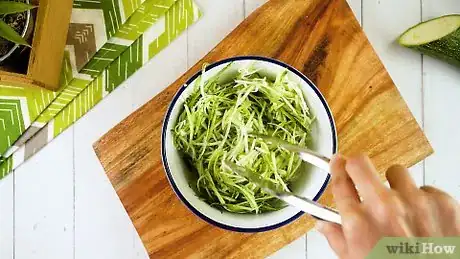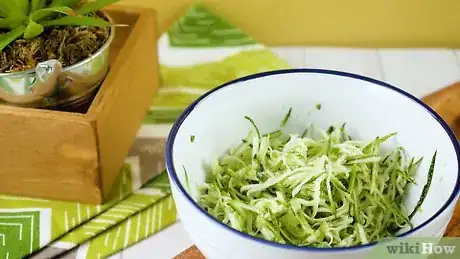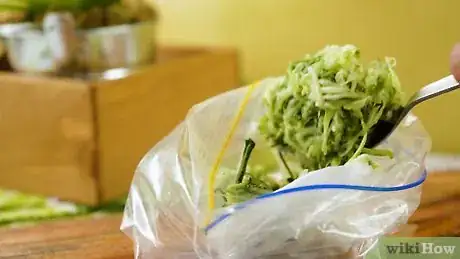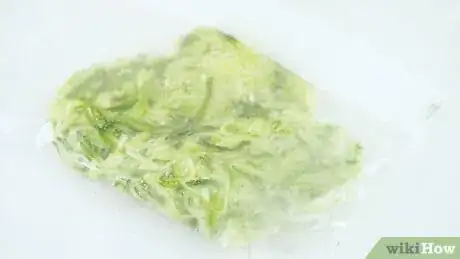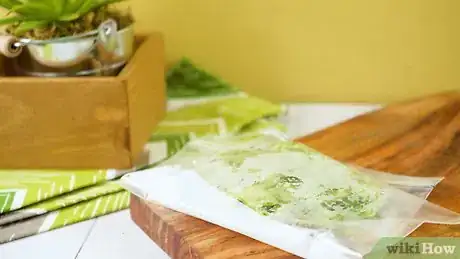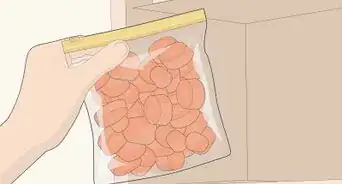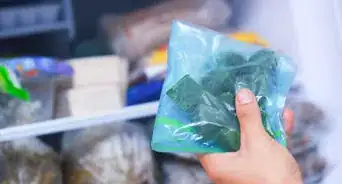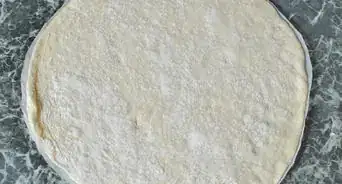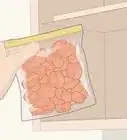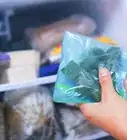This article was co-authored by wikiHow staff writer, Eric McClure. Eric McClure is an editing fellow at wikiHow where he has been editing, researching, and creating content since 2019. A former educator and poet, his work has appeared in Carcinogenic Poetry, Shot Glass Journal, Prairie Margins, and The Rusty Nail. His digital chapbook, The Internet, was also published in TL;DR Magazine. He was the winner of the Paul Carroll award for outstanding achievement in creative writing in 2014, and he was a featured reader at the Poetry Foundation’s Open Door Reading Series in 2015. Eric holds a BA in English from the University of Illinois at Chicago, and an MEd in secondary education from DePaul University.
The wikiHow Video Team also followed the article's instructions and verified that they work.
This article has been viewed 16,519 times.
Learn more...
Shredded zucchini is a healthy and delicious ingredient that can be used to make fritters, pastas, rice, or casserole. If you end up with more shredded zucchini than you need, freezing your excess zucchini is a great way to store it for up to 3 months. Before storing it, dry your zucchini out so that it doesn’t become mushy and soft when you eventually thaw it. Use some table salt and a clean cloth to extract the juices and store the zucchini in airtight food storage bags.
Steps
Removing Moisture from Shredded Zucchini
-
1Set your shredded zucchini in a large bowl. If you don’t dry your zucchini, it will become soggy and unappealing when you thaw it out after freezing. To dry the zucchini, get a clean plastic or glass bowl and set it out on your countertop. Transfer your shredded zucchini into the bowl from your food processor or cutting board.[1]
- Don’t worry if your zucchini isn’t shredded into a fine rice-like substance. This process will work for any form of zucchini that has been cut.
- You can line the bowl with paper towels before transferring the zucchini so that some of the moisture is absorbed if you’d like.
-
2Mix a little bit of table salt into your shredded zucchini. Table salt will render the juices out of the shredded zucchini and make it easier to dry out. Add 1/2 teaspoon (2.37 g) of salt for every whole zucchini that you’ve shredded. Then, use your hands to mix the zucchini around and distribute the salt evenly. As you mix it, gently squeeze the zucchini to make it easier to extract the juices.[2]
- The specific amount of salt you use isn’t really that important; you can measure the salt by eye if you don’t feel like measuring.
Advertisement -
3Let the zucchini rest for 10-20 minutes to remove the moisture. Leave the bowl out at room temperature. Put a paper towel over the bowl to protect the zucchini. Wait at least 10 minutes to give the zucchini time to release its juices.[3]
-
4Scoop the zucchini out and set it in the middle of a clean cloth. Spread a clean fabric cloth out on your table or countertop. Use a slotted spoon to scoop the zucchini out into the center of the cloth. While scooping, do your best to avoid scooping up large amounts of zucchini juice from the bottom of the bowl. Continue scooping until you remove all of the zucchini.[4]
- You can use tongs instead of a slotted spoon if you prefer.
- A small tablecloth or fabric place setting works well for this if you don’t have a good cloth nearby.
- If you’re shredding zucchini specifically to freeze it, you can shred the zucchini directly over the cloth to make things easy.
Warning: Do not use a cloth prone to shedding fibers for this. You don’t want random pieces of cloth showing up in you zucchini dishes!
-
5Twist the towel up and squeeze the zucchini to remove the juice. Take the 4 corners of the cloth and raise them together over the zucchini to make a sack. Hold the cloth over your sink or bowl and twist the sack of zucchini in either direction. Continue turning the cloth in the same direction until the sack of zucchini becomes taut. Then, gently squeeze the sack of zucchini by hand. Continue doing this until juices stop dripping out of the sack.[5]
- It is nearly impossible to get rid of all the moisture and juices. The goal is simply to get rid of most of the liquid so that the small amount of remaining fluids don’t ruin your zucchini when it thaws.
Storing Shredded Zucchini in the Freezer
-
1Transfer your shredded zucchini to airtight plastic food storage bags. Wash your hands to remove the zucchini residue. Then, untwist the cloth to expose the shredded zucchini. Grab enough airtight food storage bags to store all of your shredded zucchini. Open the bags and use a spoon to scoop your zucchini into the bags.[6]
- You can use freezer bags if you’d like, but standard food storage bags will work just fine. You should not use hard plastic containers however. The more air in the package, the more likely your zucchini is to go bad.
- Label each of your bags with the contents and the date so that you don’t mix your zucchini up with other items in your fridge.
Tip: Don’t overstuff your bags. It’s better to use a large number of thinly-packed bags than a small number of heavily-stuffed bags.
-
2Flatten the bags to remove the air and close them. Once you’ve transferred all of your zucchini, close the bags 3/4 of the way. Lay the bags on their sides and press down gently on them to compress your zucchini and remove most of the excess air. Close each of your food storage bags once you’ve removed all of the air and flattened your bags a little.[7]
- If you trap a lot of air in the bags, your zucchini is more likely to go bad.
- Flatter bags are easier to stack and don’t take up as much room as round bags.
-
3Store your zucchini in the freezer for up to 3 months. Open your freezer and stack your bags on top of one another. Alternatively, you can set the bags up vertically in a row and lean them against the side of the freezer. Your zucchini will be good for up to 3 months in the freezer.[8]
-
4Thaw your zucchini before cooking or eating it. The amount of time it takes for you zucchini to thaw depends entirely on how dense each of your packages are. You can thaw your zucchini on the counter or in the refrigerator. If you are in a hurry, take the zucchini out of the bag and heat it in the microwave for a few minutes using the defrost setting.[9]
- Always thaw your zucchini before using it in a recipe or eating it on its own.
- It will typically take 4-12 hours for your zucchini to thaw on the counter, depending on how hot your home is and how big your bag happens to be.
Things You’ll Need
- Bowl
- Salt
- Cloth
- Spoon
- Paper towel
- Plastic food storage bags
References
- ↑ http://www.my1stwordwaschocolate.com/blog/2013/04/zucchini-noodles
- ↑ https://www.npr.org/2012/08/28/160125138/zucchini-you-actually-cant-resist
- ↑ http://www.my1stwordwaschocolate.com/blog/2013/04/zucchini-noodles
- ↑ https://youtu.be/Dyr4zp0-IIM?t=75
- ↑ https://youtu.be/Dyr4zp0-IIM?t=85
- ↑ https://reallifedinner.com/freeze-zucchini-baking/
- ↑ https://reallifedinner.com/freeze-zucchini-baking/
- ↑ https://www.epicurious.com/expert-advice/how-to-store-zucchini-and-summer-squash-and-freeze-for-long-term-storage-article
- ↑ https://reallifedinner.com/freeze-zucchini-baking/
